
THE LIFE STORY PROJECT
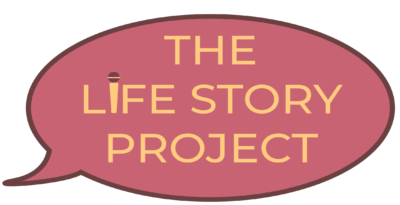
In 2013, Bruce wrote an article in the New York Times called “The Stories that Bind Us” about the power of personal stories to give us strength in challenging times. The article became a viral sensation and inspired him to start a weekly personal history project with his ailing father.
From this beginning, Bruce created The Life Story Project. He has since gathered hundreds of life stories in all 50 states, from people aged 20 to 90, all races, genders, and socio-economic backgrounds. The stories include lost limbs, lost jobs, lost homes; changed religions, changed careers, changed genders; those who got sober, got divorced, got out of cults; as well as scores who went through everyday transitions of hope, revival, and renewal.
Bruce and his team spent a year building a database of these narratives and analyzing them for 52 different variables—from high point to low point, how long it takes to recover from crises to what advice from loved ones is most helpful—and have produced an unprecedented collection of knowledge about how we navigate the transitions, disruptions, and reinventions of our lives.
[perfectpullquote align=”left” cite=”” link=”” color=”#FF8C00″ class=”” size=””]In the 20th century, we spoke of lives as linear. Now that’s changed. Our lives take all different shapes.[/perfectpullquote]
The Life Story Project is a celebration of the nonlinear life. In the 20th century, we spoke of lives as linear. Now that’s changed. Our lives take all different shapes. The days when we have one job, one relationship, one faith, one sexuality are dead. Each of us must write our own story.
Navigating this explosion of choices requires a toolkit of creative life skills. The innovation of the Life Story Project is that unlike other storytelling initiatives, we don’t rely solely on isolated episodes or individual anecdotes. We gather entire life histories, aggregate people of wildly different lives, enter each story into our model, and identify patterns useful to everyone.
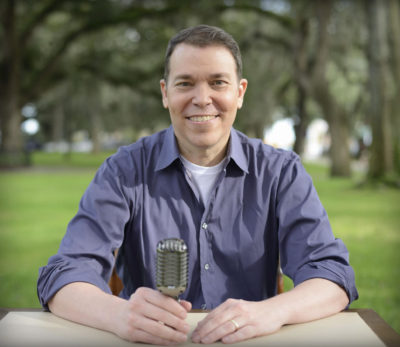 Combining the nostalgia of Studs Terkel, the intimacy of The Moth, and the intellectual rigor of TED, The Life Story Project is a fresh approach to the most enduring question of all: How do I live a meaningful life? And it harnesses the wisdom of our collective stories to inspire each of us to write a better story for ourselves.
Combining the nostalgia of Studs Terkel, the intimacy of The Moth, and the intellectual rigor of TED, The Life Story Project is a fresh approach to the most enduring question of all: How do I live a meaningful life? And it harnesses the wisdom of our collective stories to inspire each of us to write a better story for ourselves.
We’d love to include your story. If you’re interested in participating (or know someone who might be good for this project), please click here to learn more. If you’d like to receive our free newsletter, with stories, strategies, and suggestions, please enroll here. If you’d like to join the conversation, please follow me on Facebook and Twitter. You can also email Bruce directly at [email protected]. Or, if you’d prefer to browse, I’ll be posting here regularly.
INVITE ME TO YOUR BOOK CLUB
One of the best parts of being a writer is connecting with readers. This year, we’re all learning new ways to connect. In honor of the publication of Life Is in The Transitions, I’m scheduling a limited number of virtual visits to book clubs, reading groups, classes, or small gatherings of any kind — virtual, socially distant, or in-person! If you’re reading the book, I’ll pop in, answer questions, and we can all get a peak at one another’s homes. More important, we can all share wisdom and stories as we go through this wrenching transition. If you’re interested in schedule a visit, please contact Elda Monterroso at [email protected].
LIFE IS IN THE TRANSITIONS
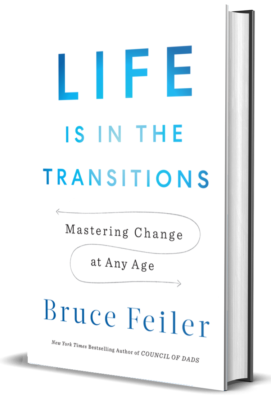
INSTANT TOP 10 NEW YORK TIMES BESTSELLER!
A pioneering and timely study of how to navigate life’s biggest transitions with meaning, purpose, and skill.
Bruce Feiler, author of the New York Times bestsellers The Secrets of Happy Families and Council of Dads, has long explored the stories that give our lives meaning. Galvanized by a personal crisis, he spent the last few years crisscrossing the country, collecting hundreds of life stories of Americans in all 50 states who’d been through major life changes—from losing jobs to losing loved ones; changing careers to changing relationships; getting sober to getting healthy to simply looking for a fresh start. He then spent a year coding these stories, identifying patterns and takeaways that can help all of us survive and thrive in times of change.
What Feiler discovered was a world in which transitions are becoming more plentiful and the skills to manage them more urgent for all of us to master. The idea that we’ll have one job, one relationship, one source of happiness is hopelessly outdated. We all feel unnerved by this upheaval. We’re concerned that our lives are not what we expected, that we’ve veered off course, living life out of order. But we’re not alone.
Life Is in the Transitions introduces the fresh, illuminating vision of the nonlinear life, in which each of us faces dozens of disruptors. One in ten of those becomes what Feiler calls a lifequake, a massive change that leads to a life transition. The average length of these transition is five years. The upshot: We all spend half our lives in this unsettled state. You or someone you know is going through one now.
The most exciting thing Feiler identified is a powerful new toolkit for navigating these pivotal times. Drawing on his extraordinary trove of insights, he lays out specific strategies each of us can use to reimagine and rebuild our lives, often stronger than before.
From a master storyteller with an essential message, Life Is in the Transitions can move readers of any age think deeply about times of change and how to transform them into periods of creativity and growth.
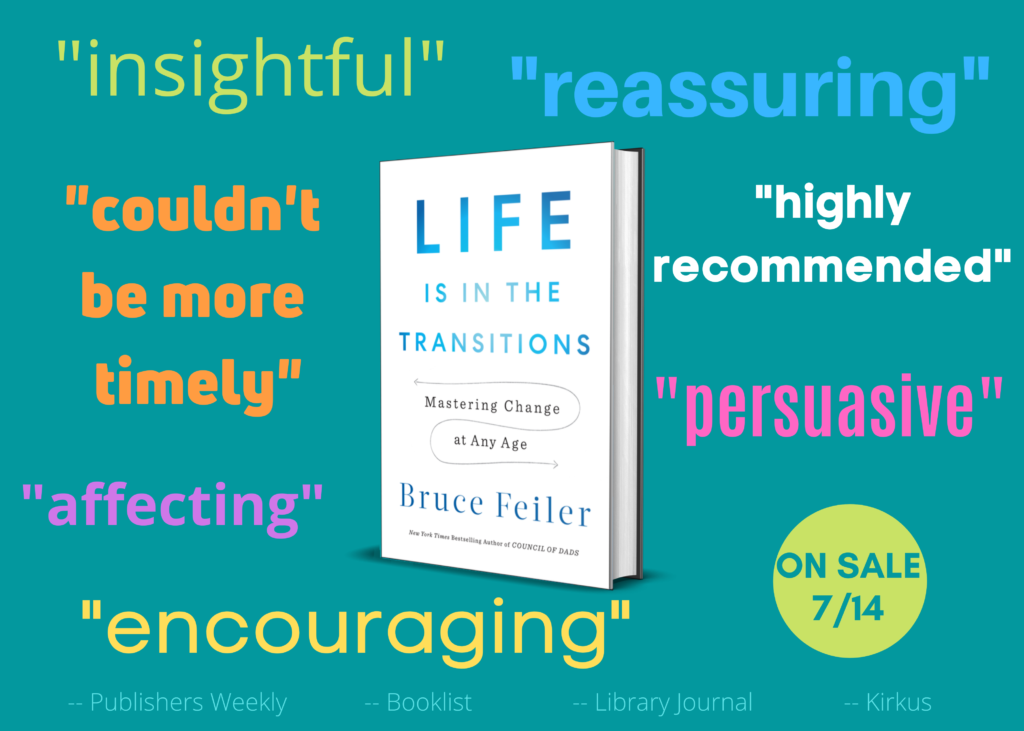
SOME EXAMPLES OF OUR STORIES
- A Wall Street bond trader turned romance novelist
- A truck driver who became a male nurse
- The Army Ranger who discovered Saddam Hussein
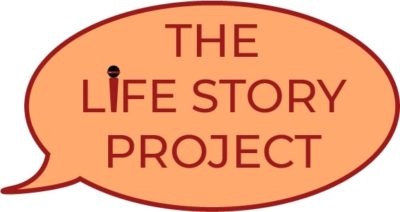
- A two-time cancer survivor who climbed Mount Everest
- A CIA analyst who quit to train rescue dogs
- A magazine writer turned mortician
- A theoretical physicist who stepped down from a tenured professorship to devote himself to his YouTube band called Ninja Sex Party
- A country music songwriter who became a Lutheran pastor
- The most decorated Paralympian in American history
- A pharmaceutical CEO who quit to raise his three sons after his wife killed herself
- A United States senator
- A Grammy winner
- A white supremacist
- A former senior member of the Unification Church
- A reformed alcoholic who went door-to-door apologizing to two dozen people whose homes she robbed while drunk
- Three people who went to prison
- Four people who died and came back to life
- Five people who survived suicide attempts
- Six people who transitioned genders
- A dad whose 9-month-old went down for a nap and never woke up
SOME EXAMPLES OF OUR INSIGHTS
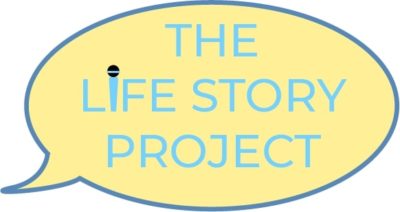 The linear life is dead
The linear life is dead- The nonlinear requires more life transitions
- Life transitions are a skill we can (and must) master
- The ABCs of Meaning—Agency, Belonging, Cause
- The Three Shapes of Life—Line, Circle, Star
- The most common life disruptors involve love, identity, beliefs and work
- We face one disruptor every 12 to 18 months
- One in ten disruptors become a LifeQuake
- A LifeQuake is a forceful burst of change that leads to a period of upheaval, transition, and renewal
- We go through 3 to 5 LifeQuakes in our lives
- Transitions are periods of adjustment, creativity, and rebirth that help us find meaning after major disruptions
- The average transition lasts 5 years
- Transitions are divided into 3 phases—The Long Goodbye, The Messy Middle, The New Beginning
- Millennials are better at transitions than Xers; Xers are better than Boomers
- Fear is the most common emotion during a transition, shame is the most potent, sadness the most enduring
- There are four types of friends—Comforters, Nudgers, Slappers, Modelers
- Why meaning is more important than happiness
- How to make yourself the hero of your own story
“I KNEW MY LIFE WAS OVER AS I KNEW IT. LITERALLY IN A MINUTE.”
Travis, 42, Boston, MA — Upwards Trajectory
“I was going to be on the ice with various national championship banners, and it was everything I dreamed it to be: a packed house, raising the banner. Two minutes into the game, we score. Place goes nuts. The band starts playing. And I got the tap on the back of my shoulder. Time to play. I waited my whole life for that, for that little tap on my shoulder. And I go out there and line up for the face off. Won the face-off. I was playing wing. The puck got into the offensive zone and my instincts took over. I skate as fast as I can. I pick up the puck and that energy, I could feel it. I just wanted to be a part of it. Thought I would deliver a big show, and I kind of crushed my opponent. I put my weight into him, and he moved out of the way a little bit. I lost my balance, hit my head into the boards and just flopped onto the ice. You’re instinct is to get up, and when you can not only not get up, but you can’t move, it’s like you have a million pounds pressing you onto the ground. It’s unbearable, like gravity. The referee blows the whistle and the team comes out. Even before they came out, I knew I was in really big trouble. The doctor moves my arm a little bit. And I couldn’t see my arm until he moved my hand. I couldn’t feel it. I was still on the ice, lying face down, my head tilted to the side. I could feel the cold against my face. But when you see your own body part moving, and you have no sensation of it moving it’s just one of those moments that are surreal. I knew my life was over as I knew it. Literally in a minute.”

“WHY IS YOUR SKIN COLORED?”
Adam, 37, Boston, MA — Parallelogram
“I went to the elementary school up the street from my house where I was the only person of color in the entire school. It was there that I realized for the first time that I was different than everyone else. I think the first time was when my best friend, Mike Gotta, asked me, “Why is your skin colored?” I didn’t really process it then, but I had indoor recess one day, and this girl Megan White came up to me and asked, “Blackface. Blackface. How do you erase?” It was complete nonsense, but it struck me. It hurt me. I remember going home and asking my parents. I was so upset, and my mother said, “You just march back in there tomorrow and you tell them that you’re tan.” What I didn’t realize then, but makes a lot of sense now, is that was it was the first time that I was devalued for the color of my skin by my parents. And it was not because they were bad; they just didn’t know what they were doing with kids of color.”
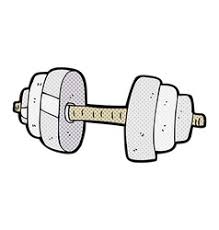
“THAT WAS THE POINT I FELT THAT GOD WAS WITH ME.”
Kellee, 52, Waldorf, MD — Dumbbell
“At the end of that second miscarriage when everything was black and there was seemingly no hope, one of the things my husband consoled me with was, “Just have faith, just have faith.” So one day I am driving through this commuting hell to work at the CIA, and I get to the parking lot, tears streaming down my face, trying to collect myself to go in to work, and I just remember thinking, “Alright God, I can’t take it anymore. I give up trying to make things happen. You have to take this.” For a control freak to finally say that, it was hard, but that’s what I did. And I felt this instant peace. That was the point I felt that God was with me.”
 “I’M GOING TO DIE. HE’S GOING TO RIP OUT MY ARTERY, AND I’M GOING TO DIE.”
“I’M GOING TO DIE. HE’S GOING TO RIP OUT MY ARTERY, AND I’M GOING TO DIE.”
Jen, 40, Northeast Philadelphia, PA — Up-and-down
“So I run upstairs and Tigger, this giant pitbull we had rescued from a fire and were planning to move to a boarding facility, is going crazy. My partner, Lori, had thrown a blanket over his face trying to blind him. I grabbed his scruff and gave him my arm so that he wouldn’t go after her. In that moment, Lori runs out of the room and then Tigger just starts flailing me around and latches onto my arm. I try to back out, but Tigger won’t let go. I say to Lori, “Pretty sure he just bit my finger off.” Turns out, he partially severed my finger, crushed all the bones, and did nerve damage. That’s the only time I thought, “I’m going to die. He’s going to rip out my artery, and I’m going to die.” Then, right as I’m thinking that, I grab the underneath of his gums and pinch them up against his teeth, and he lets go enough that I can grab my arm, and Lori closes the door real fast.”
 “I’M LEAVING MY JOB AS A THEORETICAL PHYSICIST AND JOINING THIS WEIRD YOUTUBE BAND WHERE I DRESS UP LIKE A NINJA.”
“I’M LEAVING MY JOB AS A THEORETICAL PHYSICIST AND JOINING THIS WEIRD YOUTUBE BAND WHERE I DRESS UP LIKE A NINJA.”
Brian, 42, Pompton Lakes, NJ — Calabi-Yau Manifold
“My wife was not excited about leaving her friends and her job, moving from London to LA, for what on paper reads 100 percent as a midlife crisis: I’m leaving my job as a theoretical physicist and joining this weird YouTube band where I dress up like a ninja. But after a lot of soul searching and agonizing over it for months, I said, “Look, if I don’t do this now, I know I will regret it for the rest of my life. This is going to be the thing I look back on when I’m 70, and say, “Fuck, I should have tried it.” So, with her blessing, I gave my notice to the university.
 “AT SOME POINT YOU HAVE TO BE CLINICAL ABOUT SAYING FAILURE IS FAILURE.”
“AT SOME POINT YOU HAVE TO BE CLINICAL ABOUT SAYING FAILURE IS FAILURE.”
Brad, 51, Westchester, PA — Escher Staircase
“Whether it was the way I was raised or something else, to me there’s no value in sugar coating or rationalizing to yourself that your life was a failure. And maybe it’s just because I was in venture investment, you have to be clinical about saying, “This was an awesome idea, with great people, but right now you gotta take Old Yeller to the river and put her down.” At some point you have to be clinical about saying failure is failure. And to me, if there’s part of growing as a person, it’s de-stigmatizing failure—I think it’s been helpful and to a degree liberating. And so I don’t have any problem calling my life a failure in some places.”
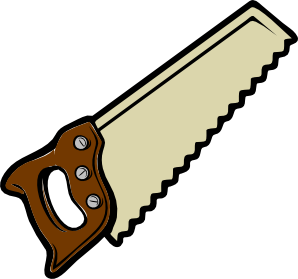 “I WAS 57 YEARS OLD, AND FOR THE FIRST TIME I WOULD TALK TO PEOPLE IN CROWDS.”
“I WAS 57 YEARS OLD, AND FOR THE FIRST TIME I WOULD TALK TO PEOPLE IN CROWDS.”
Shirley, 82, Tyler, MN — Hand Saw
“I was unaware at the time, but after the papers were signed and I had my own little apartment, I became a very different person. I was 57 years old, and for the first time I would talk to people in crowds and I would introduce myself and I didn’t realize how pushed back and manipulated and controlled I had been. It was just my personality; I allowed that to happen. That was a very good thing for me. I could do and say what I wanted. “
 “I HAD JUST GOTTEN MARRIED. WE HAD ALL JUST MOVED IN TOGETHER. AND NOW, I WAS FIGHTING FOR MY LIFE.”
“I HAD JUST GOTTEN MARRIED. WE HAD ALL JUST MOVED IN TOGETHER. AND NOW, I WAS FIGHTING FOR MY LIFE.”
Anne, 56, Grand Rapids, MI — Sunset
“We were married on Mackinac Island and I had not been feeling well. The signs weren’t huge. I just sort of felt sluggish. I went running on my wedding day. I just sort of felt like I was battling a cold. And I had diarrhea. And the doctor said, “I want to put you on this but it’s really expensive. And I said, “Well let’s try that after I get married.” So after I got married, I went on this new drug and the diarrhea didn’t go away. And he said, “Let’s just do a CT scan.” So we did a CT scan and the cancer was everywhere. If I hadn’t caught it then, I wouldn’t be here right now. It was a small cell double hit lymphoma. B-cell but double hit. It was in my bones. It was in my femur. It covered my spleen. There were tumors in my abdomen. It was in my skull. It was on my clavicle. I had just gotten married. We had all just moved in together. And now, I was fighting for my life.”
 “MY MOTHER WOULD CONFIDE IN ME AND PLOT WITH ME TO LEAVE MY FATHER.”
“MY MOTHER WOULD CONFIDE IN ME AND PLOT WITH ME TO LEAVE MY FATHER.”
Henry, 56, Griffin, GA — Zig Zags
“Beginning when I was about 12 or 13 years old, my mother would confide in me and plot with me to leave my father. Three or four times she went to another city and bought a condominium, and we were going to escape in the middle of the night from him. There was another time when we moved back to her hometown and bought a house. Then this is what would always happen: My father would learn of it and would come and lure her back. Because she was frankly a weak woman in the 1950s who did not believe that she could be self-supporting. But remember, I’d be her conspirer. He then looked to me as the person his wife had been plotting with to get away from him. I mean, it was sick on so many levels.”
 “LO AND BEHOLD, AN ALCOHOLIC JUST CAN’T DRINK.”
“LO AND BEHOLD, AN ALCOHOLIC JUST CAN’T DRINK.”
Charles, 43, Oklahoma City, OK — Bonsai Tree
“Eventually, I did bottom out. My wife took the kids. By this time our eldest daughter was three and our youngest was less than one. I had tried a 28-day treatment program, and I would get a little bit of sobriety, but not much. Maybe a week or two. At the most. And when she took the girls one night, I thought, I don’t know what I am going to do. I went back to this facility, and while I was there this time, a word came up on the board during one of the sessions that the counselors lead, and that word was: ACCEPTANCE. And I really thought about it. Around step one, we had admitted that our lives had become unmanageable, and acceptance really is a precursor to that. I had heard the word so many damn times, but I didn’t understand it because I was an alcoholic. I realized after five years of trying to get sober that I was an alcoholic. But I didn’t realize till that moment that I couldn’t drink. Lo and behold, an alcoholic just can’t drink.”
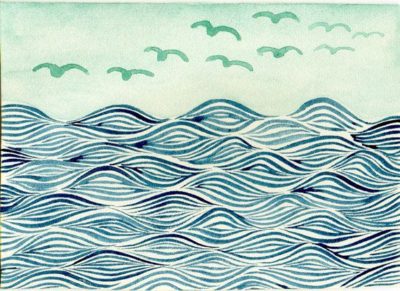 “MY FIRST HUSBAND LOVED ME FROM THE WAIST UP, BUT HE DIDN’T WANT TO SEE ME FROM THE WAIST DOWN.”
“MY FIRST HUSBAND LOVED ME FROM THE WAIST UP, BUT HE DIDN’T WANT TO SEE ME FROM THE WAIST DOWN.”
Serena, 78, Iowa City, IA — Ocean Waves
“I was born with a disproportionate body tendency. I was a very beautiful child, apparently. My mother had people stop. I had white blond hair. But when I went into adolescence, I was like a seven on top and a fourteen on the bottom. And that meant that I did not do activities, because I didn’t want people to see my legs. I didn’t want to go in the swimming pool. I didn’t wear flats. I never wore jeans until I was 60. When I was 16, I went to the Young Democrats Convention. Because at that point I thought I might want to be the first woman senator from California. And I impressed this guy who was 20 at the time, and we started dating. But eventually he said to me, “Who wants a girl as pretty as a picture if she doesn’t have a frame to match?” I have a good body. I appreciate it and love it. But I felt ashamed. Even my first husband loved me from the waist up, but he didn’t want to see me from the waist down. And I wasn’t even that fat. I was much thinner than I am now. He was obsessed with fatness because he had been fat once in his life. The day we came home from the hospital with my daughter, he said, “Tomorrow you start sit-ups.” So I got rid of her, and I got rid of my first son, but my third child is still part of my belly.”
 “WE HAD A LOT OF ISSUES, MARK AND I, ABOUT THE JEWISH STUFF.”
“WE HAD A LOT OF ISSUES, MARK AND I, ABOUT THE JEWISH STUFF.”
Jen, 52, Los Angeles, CA — House
“A high point of my life was when my youngest son was Bar Mitzvahed. Seeing my whole family up there on the Bima, as well as Mark’s family. We had a lot of issues, Mark and I, about the Jewish stuff. My family totally embraced all this wonderful Jewish history and has been very supportive, even though they were WASPs and I was raised without any religion. But his family was very unhappy with his choice to marry someone who wasn’t Jewish. His dad died without ever being able to accept it, which I have struggled to understand because I felt like I was doing everything I could. It wasn’t until that Bar Mitvah that his mom finally realized I was serious about raising my kids Jewish. I think maybe part of her didn’t believe till then. That’s one of the reasons it was such a magical moment. It was a merging of the families.”

“IT DAWNS ON ME THAT CELIBACY IS THE ANSWER.”
Sean, 56, St. Louis, MO — Open Eye
“I remember discovering a copy of Everything You Always Want to Know About Sex: But Were Afraid to Ask, which is this horrible book when you approach it as a young gay kid, because homosexuality is described as unhealthy, cross- dressing. Just this bizarre opinion about what gay life was. And I remember looking at it and thinking, This is not what I want to be when I grow up. I was having this tug of war between what I knew to be true about myself and what this guy said my life is going to be. So, when I get to my teens, and I’m being educated by Benedictine monks, who are celibate, it dawns on me that celibacy is the answer. I could ignore this issue for the rest of my life and live a life of intellectual rigor and inquisitiveness. All sorts of doors seemed to open with the notion of being a monk. I started exploring and decided that I had the religious vocation to be a monk. So, after high school, I went and joined a monastery.”
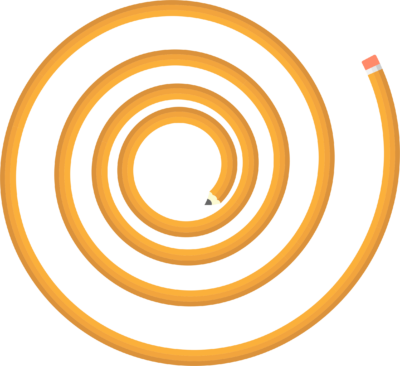 “IN REFUGEE CAMPS AFTER BEING EVACUATED FROM SAIGON, THEY TAUGHT US SOME AMERICAN SONGS.”
“IN REFUGEE CAMPS AFTER BEING EVACUATED FROM SAIGON, THEY TAUGHT US SOME AMERICAN SONGS.”
Linh, 52, Albuquerque, NM — Concentric Spiral
“I had the good fortune of having this amazing teacher on my first day of school in America. Her name was Ms. Pinsin. She was this lovely African-American teacher at Stone Elementary School in Greenville, South Carolina.[show_more more=”Read more.” less=”Read less.” color=”#53a231″ size=”120″ align=”left”] She administered a rather informal test to figure out what grade level should I should be in. She brought me up to the front of the class and opened up the English textbook and asked if I could read it. At this point I had only been out of Vietnam for several weeks, and I didn’t speak a word of English. But I read the first few letters and recognized them as part of a poem. The first words were, “O beautiful for spacious skies.” When we were in refugee camps after being evacuated from Saigon, they taught us some American songs. Even though I couldn’t read the words, I sang the song, and Ms. Pinsin gave me credit for knowing how to read well enough to stay in fifth grade. Had she turned to different page, I wouldn’t have started in third grade.” [/show_more]
TELL ME YOUR STORY
I’d like to hear your life story. Here’s why: 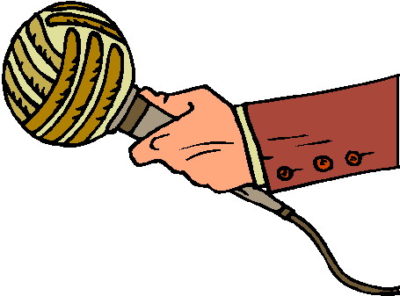
In recent years, I’ve had a number of unexpected pivots in my life – from life-threatening cancer to financial uncertainty to family crisis. Sure, I knew that all these things might happen. But l didn’t expect them to happen to me, at least how they happened and especially when they happened. My life was supposed to take a predictable path. Now that path had disappeared.
I soon discovered I wasn’t alone. Everyone I knew was struggling with one defining challenge or another – from failing relationships to failing industries, from lost limbs to lost homes, from switching religions to switching genders. The world, it seems, is full of disruption, disorder, chaos. Change, once a break in the normal, has become the new normal.
And it’s not going away. If anything, the unease we’re all feeling is part of a larger transition.
In recent years, our understanding of how we all live has changed dramatically. We used to see human lives as rigid, full of fixed traits and unchanging identities, proceeding along predictable timetables. Now we know better. Everyone’s life is different, full of its own unique twists, pivots, peaks, and wobbles.
[perfectpullquote align=”left” class=”32″ cite=”” link=”” color=”#FF8C00″]“Change, once a break in the normal, has become the new normal.”[/perfectpullquote]
I’m trying to understand how we make sense of all this. Specifically, I’m undertaking a new project to figure out how we survive theses fluctuations. How we adapt and update our life stories to accommodate so many unexpected interruptions. Everyone’s got them, yet some people seem to navigate them more easily. How?
The heart of the project is a series of life stories I’m gathering – scores of them, from all walks of life and ages. I’d like to hear yours. Really. Or, if you’d prefer, please recommend someone who’s got a great story to tell.
The Life Story Interview I’ve designed takes about two hours and can be done in person or via Skype. If you’d like to participate, or if you have any questions, please drop me a line at [email protected]. Or, if you’d just like to browse some of the stories we’ve collected and lessons I’ve learned, check out my blog, or follow me on Facebook, Twitter, Instagram, or LinkedIn.
In the meantime, thank you for reading, sharing, and joining. And tell me: What shape is YOUR life?


